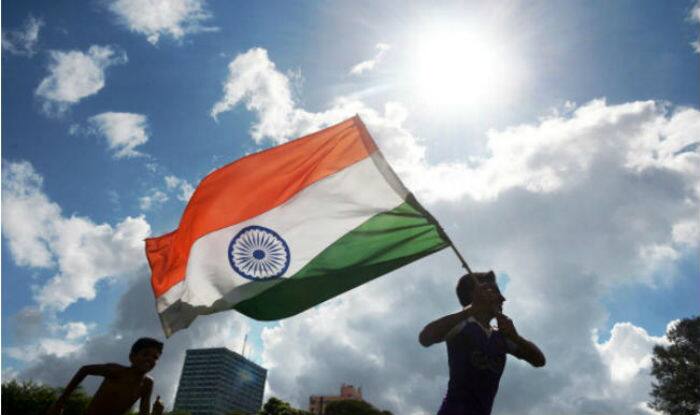
By clicking “Accept All Cookies”, you agree to the storing of cookies on your device to enhance site navigation, analyze site usage, and assist in our marketing efforts Cookies Policy.

New Delhi, August 14: India celebrated its first Independence on 15th August 1947, the basics of India’s Independence are known to all. Just after midnight on August 15, 1947, Jawaharlal Nehru, as leader of Congress, signed the declaration of Independence and delivered the famous “Tryst with Destiny” speech to declare that India was no longer governed by the Britishers.
Now, here are some rarely known facts about India’s struggle that led to the country’s freedom, and the Independence Day in particular. (Also Read: Najeeb Jung wishes on Independence Day)
– India got its freedom through the Indian Independence Act 1947 of the United Kingdom Parliament. The act received consent from the British government in July 1947 and India officially received independence on August 15, 1947. Unfortunately, the act also resulted in the partition of India, which created East and West Pakistan.
– After 1971, East Pakistan achieved Independence from the ruling government and became Bangladesh in 1971. It is quite noteworthy that Bangladesh observes August 15 as national Mourning Day, following the assassination of politician Sheikh Mujibur Rahman and his family on that date in 1975.
– Earlier when the British considered giving India independence, they had said it would be done latest by June 1948. However, the then Viceroy of India, Lord Louis Mountbatten, moved up the date to August 15 to coincide anniversary of Japan’s surrender to the Allied Forces which led to a formal end to World War II.
– Japan and Korea also became independent in 1945. Now both South Korea and North Korea share their Independence Day with India.
– Though India gained its Independence but Goa was still being controlled by the Portuguese. On December 19, 1961, the state was finally annexed to India.
– There were as many as 562 princely states when India got its freedom. While 560 states joined India, whereas two states Junagadh and Hyderabad were annexed by the military.
– In early 1900s freedom fighter, Lokmanya Tilak and famous Parsi businessman Sir Ratan Tata conceived The Bombay Swadeshi Co-Op Stores Co. Ltd. to promote manufacture, sale and use of Swadeshi goods. The store is now called The Bombay Store.
– According to the law only “khadi” (hand-spun cloth) should be used for our national flag.
– The Flag Code of India states that apart from “khadi” any other material used to make the national flag may sentence you to three years of imprisonment and a fine.
– The first version of the national flag was designed by freedom fighter Pingali Venkayya designed at Bezawada (now Vijayawada) city in Andhra Pradesh in 1921.
– The national flag had two colours – saffron (more reddish) and green – symbolizing the two major communities in India, Hindu, and Muslim.
– Mahatma Gandhi suggested a white stretch in the middle to represent the other communities with a spinning wheel as a symbol of progress.
– Mahatma Gandhi wanted to dissolve the Congress party post-Independence.
– On the eve of January 30, 1948, when Mahatma Gandhi was assassinated, he had drafted a resolution for the Congress which read: “Though split into two, India having attained political independence through means devised by the Indian National Congress, the Congress in its present shape and form, i.e., as a propaganda vehicle and parliamentary machine, has outlived its use.”
– On August 15, Republic of Congo also gained independence from France in 1960 and it is celebrated there too.
– Apart from Indian Independence, August 15 holds much more in Indian history than being just a day when India achieved its freedom.
– Mohun Bagan Athletic Club was founded on August 15, 1889. Its players created history by becoming the first Indian team to win Calcutta Shield in 1911. It is quite noteworthy that Mohun Bagan players were barefoot.
– Famous social reformer Aurobindo Ghose was born on Aug. 15, 1872.
– Noted writer Khushwant Singh, in his memoir, had written that he was born in the monsoon months, but no one in his family kept the record of the day. He would later choose August 15 as his date of birth.
– Famous Indian classical musician Ustad Amir Khan and the founder of the Indore Gharana, was born on August 15, 1912.
– Famous cartoonist Pran, also known as a creator of Chacha Chaudhary, was also born on August 15, 1938.
– Actress Rakhee Gulzar was also born on August 15, 1947.
– August 15, 1969, saw the inauguration of the Woodstock Festival, what was to become the biggest icon of peace and non-violent protests in the era.
– India did not have any National Anthem when our country became Independent on August 15, 1947.
– Rabindranath Tagore wrote ‘Jana Gana Mana’ in Bengali on December 11, 1911, but the Hindi version was adopted by the Constituent Assembly as the National Anthem of India on January 24, 1950.
For breaking news and live news updates, like us on Facebook or follow us on Twitter and Instagram. Read more on Latest India News on India.com.